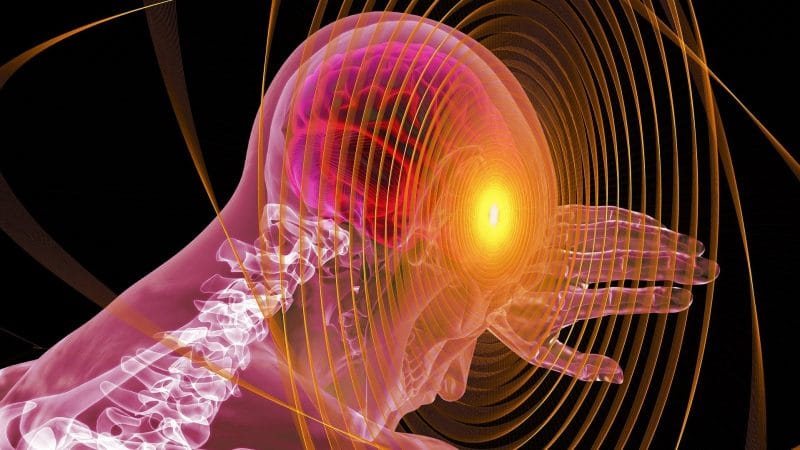29 Little Known Epilepsy Statistics That Will Shock You

What can these epilepsy statistics tell you that hasn’t been said before? Plenty. First of all, we’re putting some coronavirus facts and stats into the mix as that is the most recent factor in the disease. Naturally, we’re going to tell you about the population struggling with the disease, both in the US and worldwide. Finally, we’ll say a couple of words about the available treatments.
But first, here are the top ten stats for the warm-up.
Top 10 Epilepsy Statistics for 2022
- The cause of epilepsy is not known in 60% of the cases.
- About 30% of children can control their seizures by following the ketogenic diet regime.
- Antiepileptic drugs (AED) are successful in 60% to 70% of the cases.
- 50 million people around the world struggle with epilepsy.
- 1 in 26 Americans will develop some form of epilepsy during their lives.
- 5%–46% of people with autism also have epilepsy.
- COVID and epilepsy: people with epilepsy are not at higher risk of getting infected.
- Prescribed CBD improves seizure control by almost 40% as opposed to artisanal CBD, which had the opposite effect.
- People with epilepsy have three times higher chances of premature death.
- Epidiolex is the only FDA-approved cannabis drug for epilepsy treatment.
Surprised? We told you we’re going to present you with interesting stats about epilepsy. Read on, get educated, and possibly healthier! If you’re lucky enough not to suffer from it, this article can teach you how to give a helping hand and you’ll get to know what living with epilepsy is like.
Must-Know Epilepsy Facts and Stats
“Epilepsy,” or Greek “epilepsia,” means “to seize.” And before the 19th century it wasn’t considered a brain illness at all, but something demonic. Here’s what more you need to know about the disease:
1. Anyone can have epilepsy.
(Mayo Clinic)
It can occur in anyone, at any time. Don’t be fooled that it only appears for the first time in childhood. True, it is most common in children, but in old people as well.
2. Blank staring into space for a few seconds can be defined as an epileptic seizure.
(LiveWell)
How long can a seizure last? From a few seconds to a few minutes. An epileptic seizure can take many forms, from rapid blinking to twitching, making jerky movements, emptying bowels, and passing out. All of these are the results of simple excessive electrical signals in the brain.
3. 5%–46% of people with autism also have epilepsy.
(SPARK)
Autism and epilepsy are two conditions that are closely related. On top of that, autistic women are more likely to develop epilepsy.
4. There are 60 different types of epilepsy.
(Epilepsy Foundation)
Along with that, there are 30 separate types of epileptic seizures that needn’t be obvious or violent.
5. Epilepsy is one of the oldest illnesses.
(WHO)
At least if we consider the earliest recorded diseases. Written records about it date back to 4000 B.C. Unfortunately, it has also been misunderstood for centuries, and even today, this prejudice affects people’s lives.
6. What causes epilepsy is not known in 60% of the cases.
(Epilepsy Foundation)
In the other 40%, the brain damage can be caused by a stroke, poisoning (alcohol or drug abuse), brain injury or tumor, Alzheimer’s, brain infection, prenatal trauma, problems during birth, etc.
7. A person will not swallow their tongue during a seizure.
(Epilepsy Society)
Swallowing a tongue during a seizure is just another myth that should be debunked. Nothing is to be put inside the person’s mouth. It is also not possible to stop the seizure, but we should allow it to finish on its own while taking some precaution measures (removing sharp objects, putting a pillow below one’s head, etc).
8. WHO epilepsy facts from 2019 report the frequency of epileptic seizures ranges from less than one per year to several seizures per day.
(WHO)
Having an epileptic seizure does not immediately mean a person is diagnosed with epilepsy. For it to be set as a diagnosis, a person has to endure two or more unprovoked seizures.
9. Hippocrates was the first person that wrote a book about epilepsy.
(Medscape)
And not only that, he was also the first famous person who believed epilepsy starts in the brain. Remember, he lived over 2500 years ago.
Epilepsy Statistics Worldwide
When it comes to neurological illnesses, epilepsy takes the number one spot as the most common brain disease that can affect anyone.
10. 50 million people around the world struggle with epilepsy.
(WHO) (International Epilepsy Day)
About 5 million people are diagnosed with epilepsy annually. In poor countries, the figure can be as high as 139 per 100,000. In comparison, the average rate is 49 per 100,000.
On that note, International Epilepsy Day in 2021 (8 February) will take place under the campaign name “50 Million Steps for Epilepsy“.
11. What is the life expectancy of a person with epilepsy? People with epilepsy have three times higher chances of premature death.
(WHO)
This statistic is usually limited to countries with poor healthcare, i.e., low- and middle-income countries. Some consequences of epilepsy are very much preventable, hence the higher survival chances. Admittedly, certain risk factors hold true everywhere. Epileptic seizures can be followed by physical issues such as bruises, cuts, and fractures due to falling. Anxiety and depression are quite common, too.
12. Epilepsy statistics in the UK show there are over 500,000 people that live with epilepsy.
(Epilepsy Society)
Approximately 600 people lose their lives annually due to SUDEP (sudden unexpected death of someone with epilepsy).
13. By law, epilepsy was a valuable argument for a marriage annulment in the UK and Ireland until 1971.
(WHO)
Real-life examples always make the most interesting facts about epilepsy. The US is not much better either, as people with seizures could be legally denied entrance into restaurants, theatres, and similar public facilities.
14. About 80% of the people with epilepsy come from low and middle-income countries.
(WHO)
Where is epilepsy more common in the world? In places with subpar healthcare. This is extremely shocking and logical at the same time. If treated properly, epilepsy symptoms can be diminished in 70% of the cases. This perfectly explains the high percentage in these countries.
Epilepsy Statistics in the US
How many Americans suffer from epilepsy, what is a tonic-clonic seizure, and what you need to know about the mortality rates.
15. 1 in 26 Americans is at risk of developing some form of epilepsy during their lives.
(Epilepsy Foundation)
That makes 4% of the population. 10% of Americans will probably have at least one seizure during their lifetime, i.e. a short disconnection in the brain causing temporary changes in movement or behavior.
16. Epilepsy death statistics show that tonic-clonic seizure is the major cause of sudden unexpected death in epilepsy (SUDEP).
(Epilepsy Network) (Emedicine)
The higher the seizure frequency, the higher the mortality rates. About 50,000 people die in the US due to different types of epileptic seizures or their consequences.
17. 1.5% of Asian Americans struggle with epilepsy.
(Healthline)
Epilepsy demographic statistics show that it is more frequent in Hispanics than the other groups. In addition, active epilepsy is less frequent in African Americans.
18. Epilepsy statistics present epilepsy as is the fourth most common neurological disorder in the USA.
Epilepsy ranks fourth, right after migraine, stroke, and Alzheimer’s (respectively). As a matter of fact, the total number of Americans suffering from epilepsy is higher than the number of all people struggling with cerebral palsy, Parkinson’s disease, and multiple sclerosis.
19. About 3 million American adults and children deal with epilepsy.
(Healthy Children) (Mayo Clinic)
How many people have epilepsy in the US? 3 million adults and 450,000 children. Generally, men seem to have higher rates than women.
20. The chances of getting diagnosed with Alzheimer’s are six times higher for epileptic people
(UCLA Health)
Epilepsy and Alzheimer’s disease and linked. Epileptic seizures cause damage to the memory centers inside the brain, thus contributing to dementia. In return, Alzheimer’s can indirectly be blamed for deaths due to epilepsy.
New Stats and Facts About Epilepsy Treatment
21. Epilepsy surgery is done on the brain during which a part of the brain is removed or some alterations are made to it.
(Mayo Clinic)
If at least two AEDs are not useful enough, surgery is indicated. It can be very successful if the problem is in one localized area of the brain. There are several types of surgery, which carry the risks of stroke, depression, memory and language problems, visual impairment, or headache.
22. Epilepsy and COVID-19: generally, people with epilepsy are not at higher risk of getting infected.
(Epilepsy Foundation)
Epilepsy doesn’t affect the immune system, given that the seizures don’t cause immune deficiency. Nevertheless, epilepsy patients that have other medical problems (like diabetes or lung problems) should be on high alert.
Moreover, people with autoimmune epilepsy could be at a higher risk than the rest.
23. Epilepsy facts and statistics show us that antiepileptic drugs (AED) are successful in 60% to 70% of the cases.
(AES)
The treatment is stopped in 50% of the people who are seizure-free for 2 or 5 years. The treatment largely depends on the cause and type of epilepsy.
24. Epidiolex is the only FDA-approved cannabis drug for epilepsy treatment.
(Healthline) (FDA)
Marijuana and epilepsy studies and research are very encouraging, so even the FDA could not ignore the fact that Epidiolex is efficient in treating two rare epilepsy types: Dravet syndrome and Lennox–Gastaut syndrome. The medicine is used for adults and children who are 2 years old or older. Epidiolex has also been approved as a treatment for tuberous sclerosis complex (TSC).
25. Epilepsy facts tell us that CBD can interact with antiepileptic drugs and has to be monitored.
(ConsumerLab) (ILAE)
It may increase or decrease some of the substances. CBD is said to affect rufinamide, zonisamide, topiramate, clobazam, and eslicarbazepine. Lower doses may be without side effects, but more research on epilepsy and medical marijuana is needed.
26. Prescribed CBD improves seizure control by almost 40% as opposed to artisanal CBD, which had the opposite effect, as reported by epilepsy statistics 2020.
(Epilepsy Journey)
A new study on children has some interesting findings. Although there are many benefits of CBD oil for seizures, keep in mind that this is a new study and more research is needed.
Pharmaceutical CBD products provide more control over seizures, unlike artisanal CBD.
27. THC can trigger epileptic seizures.
(Epilepsy Society)
Child epilepsy statistics and rates can be diminished with CBD oil if it is isolate CBD oil.The reason why CBD oil for epilepsy should not contain THC is that animal studies have shown it can entice seizures. Its effect on a young brain is also doubtful. There isn’t enough evidence that the entourage effect of CBD and THC is valuable in epilepsy treatment, so parents are advised against using it.
28. About 30% of children can control their seizures by following the ketogenic diet regime.
(WebMD) (Boston Children’s Hospital)
The ketogenic diet can help to curb epileptic seizures. That does not mean it is universal, though. Epilepsy statistics say it is helpful with children who suffer from Lennox-Gastaut syndrome and myoclonic-astatic epilepsy (Doose syndrome). Adults don’t show much improvement, however.
The diet is focused on severe carb restriction in favor of fats. While an average child takes 25% to 40% of their calories from fat, a kid on a ketogenic diet takes about 80% to 90%.
29. 73.1% is the percentage of population with epilepsy that prefers natural CBD to its synthetic version.
(MedicalNewsToday) (Prohibition Partners)
Synthetic cannabidiol called 8,9-dihydrocannabidiol (H2CBD) is said to have the same medical effects as herbal CBD. It is considered better regarding the law, as it would be legal everywhere and FDA-approved. In addition, it wouldn’t require land for planting and it would pollute the environment less.
On the other hand, most epilepsy patients say “no” to synthetic CBD, while only 4.8% of them would say “yes”. 22.1% see no difference between the two.
Conclusion
Overall, not much is known about epilepsy. Its causes are still a mystery and there is no cure for it, but rather a combination of treatments that may or may not work. Coronavirus is making things more complicated for everyone, thus putting some epilepsy patients at risk.
Epilepsy rates and research about CBD effects are bringing good news and making cannabis history as you are reading this. It is possible to live a seizure-free life even if one is diagnosed with the disease. Without a doubt, natural CBD can help a great deal.
FAQs
What percentage of people with epilepsy have partial seizures?
There are two types of partial seizures:
- Simple partial seizures — about 14% of patients with epilepsy experience this type. A person does not lose consciousness or awareness. There is no mental confusion; just simple motor or sensory changes.
- Complex partial seizures — 36% of people with epilepsy experience these. In contrast to the previous simple type , a person experiences brief mental confusion, or short loss of awareness, along with involuntary movements. Consequently, such epilepsy is usually misdiagnosed.
Does epilepsy ever go away?
Yes, it is possible. According to some research results, 50 out of 100 children outgrow their epilepsy. It was reported that after twenty years had passed from their first diagnosis, 75 out of 100 people were free from seizures for at least 5 years.
This is a complex condition that is not always easy to recognize, and even the seizures don’t have to be too obvious. It is possible to get off the epilepsy medications and be seizure-free for the rest of your life, but it’s not that common.
What is the percentage of population with epilepsy today?
The latest WHO statistics inform us there are 50 million people around the world diagnosed with the disease.
There are 7.7 billion people in the world. When we do the maths, it turns out that 0.64% of the world population suffers from some form of epilepsy.
Regarding the States, there are 1.1% of adult Americans living with epilepsy.





